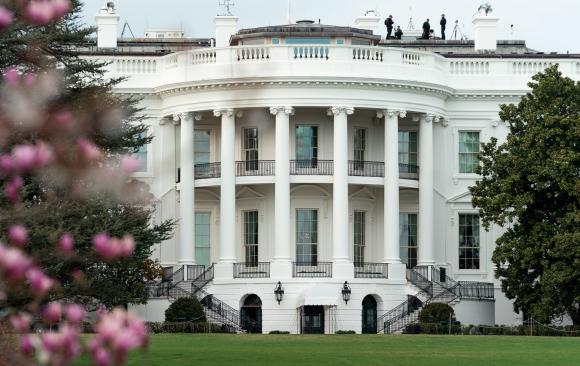


On Nov 7, 2020, after many days spent counting ballots in key swing states, the Associate Press called the 2020 election for Joe Biden over incumbent President Donald Trump.
President Donald Trump still has not conceded his defeat to President-elect Joe Biden, but his bid to overturn the election results has run out of legal gas over the past week.
The lawsuits of the Trump campaign and its allies have failed. Certifications are proceeding on schedule.
President-elect Joe Biden still needs to wait for the electoral college to meet in December and for Congress to confirm their votes in January before his inauguration on Jan. 20, 2021.
Donald Trump joins 9 leaders who didn’t do a second term in the White House. Which US presidents only served one term?
Let's look Presidents who were unable to secure a second term.
Donald Trump
President Donald Trump, the 45th U.S. president, was elected in 2016 and will serve from January 2017 to January 2021. Trump was defeated by Joe Bide in the November 2020 elections.
George HW Bush - 1989-1993
Bush senior became the 41st POTUS when he was voted to office in 1989.
His biography stated he wanted to make America a kinder and gentler nation but his time in office was short and he was beaten in 1993 by Bill Clinton.
Clinton, a Democratic nominee, served two terms before he was succeeded by Bush's son, George W Bush, who also served two terms.
Bush senior died in November 2018, aged 94.
Jimmy Carter - 1977-1981
POTUS no.39, Carter, worked hard to "combat the continuing economic woes of inflation and unemployment", according to the White House website.
Yet he only survived one term in office and was beaten by Ronald Reagan in 1981.
A member of the Democratic Party, Carter's work continued and in 2002 he was awarded the Nobel Peace Prize for work to find peaceful solutions to international conflicts, to advance democracy and human rights, and to promote economic and social development.
Gerald Ford - 1974-1977
Republican Ford became the first unelected POTUS following the resignation of Richard Nixon after the Watergate scandal.
The 38th president pardoned Nixon and Americans made sure their voices were heard at the voting booth, as Carter took the win.
Herbert Hoover - 1929-1933
Shortly after Hoover was elected, the US endured the Great Depression following a monumental stock market crash.
The 31st POTUS (Republican) responded by cutting taxes and expanding public works spending to keep the Federal budget balanced.
His biography on the White House website stated: “In 1931 repercussions from Europe deepened the crisis, even though the President presented to Congress a program asking for creation of the Reconstruction Finance Corporation to aid business, additional help for farmers facing mortgage foreclosures, banking reform, a loan to states for feeding the unemployed, expansion of public works, and drastic governmental economy. At the same time he reiterated his view that while people must not suffer from hunger and cold, caring for them must be primarily a local and voluntary responsibility.”
In 1933 he lost to Franklin D. Roosevelt who went on to complete three terms.
William Howard Taft – 1909-1913
Taft - POTUS no.27 - is the only president to go on to serve as chief justice. A Republican, Taft lost the 1913 election to Woodrow Wilson. He was appointed chief justice between 1921-1930 and for Taft this was his greatest honor. “I don’t remember that I ever was President,” he wrote.
Benjamin Harrison – 1889-1893
During his election campaign, Harrison was one of the first to deliver short speeches to delegations that visited him in Indianapolis.
Known as a 'front-porch' campaign, according to the White House website.
It brought the desired result, as he became the 23rd POTUS, before he was ousted in 1893 by Grover Cleveland. He was a Republican.
Martin Van Buren – 1837-1841
A founder of the Democratic Party, Van Buren served as vice president and secretary of state under Andrew Jackson before he became POTUS no.8 in 1837.
He was beaten by William Henry Harrison in 1841.
John Quincy Adams – 1825 -1829
JQ Adams wore many hats during his public career. He was a member of multiple political parties, served as a diplomat, a senator and a member of the House of Representatives as well as becoming POTUS no.6. He was a member of the Whig Party at the time.
John Adams – 1797-1801
And way back in 1801, Adams became the first president to fail to serve a second term when he was beaten by Thomas Jefferson. Adams represented the Federalist Party and had served as the first vice president under George Washington.